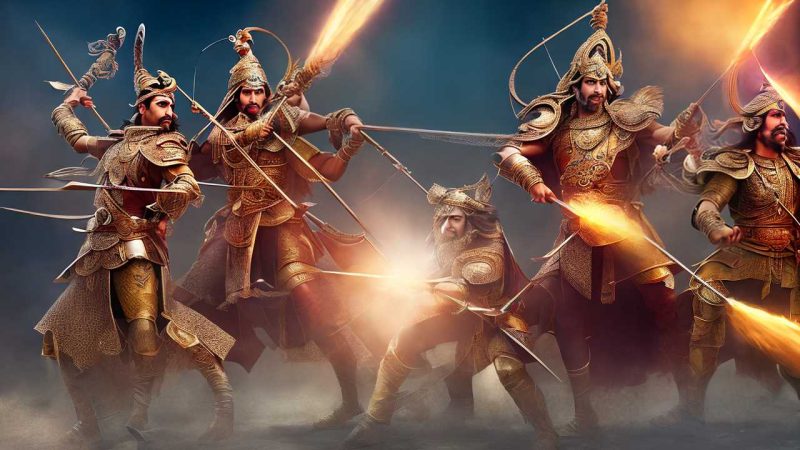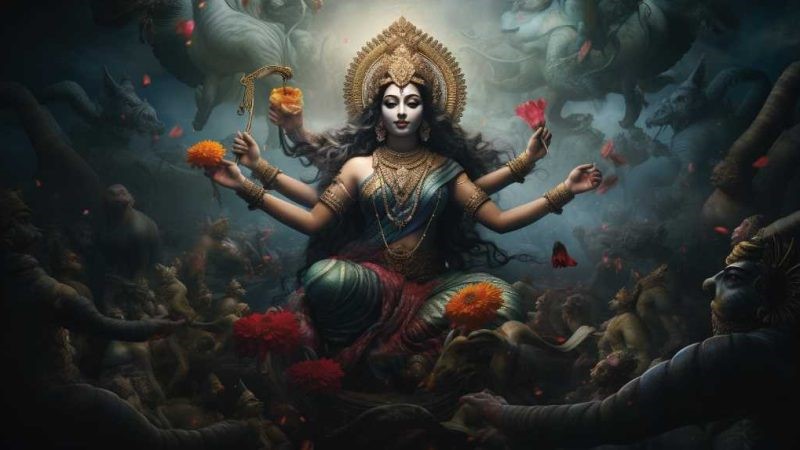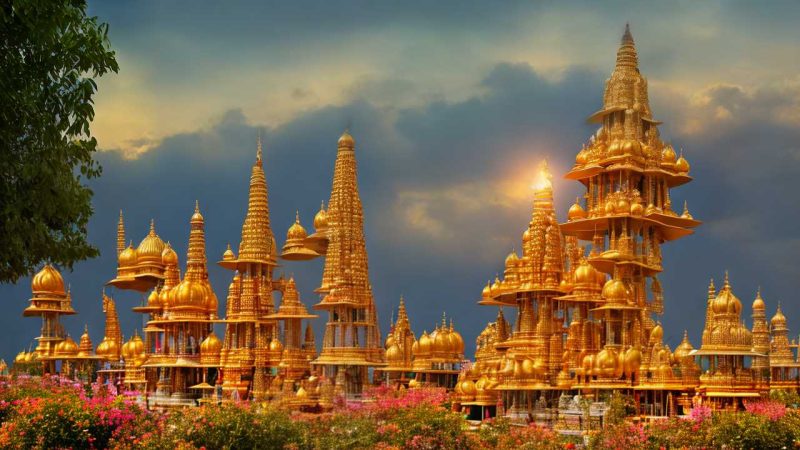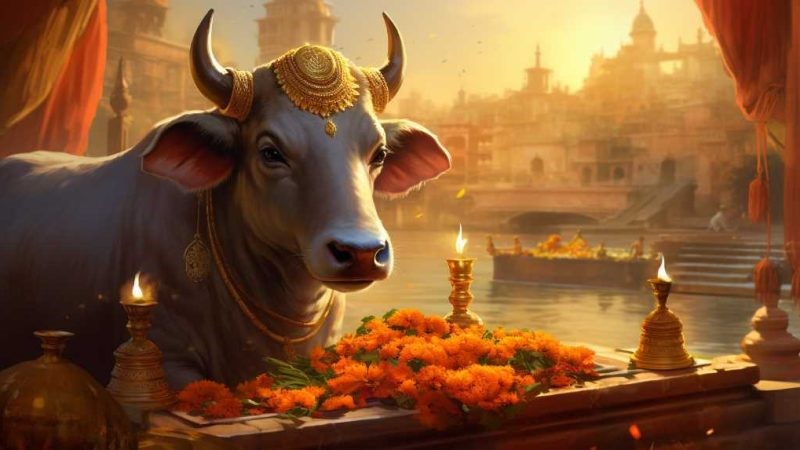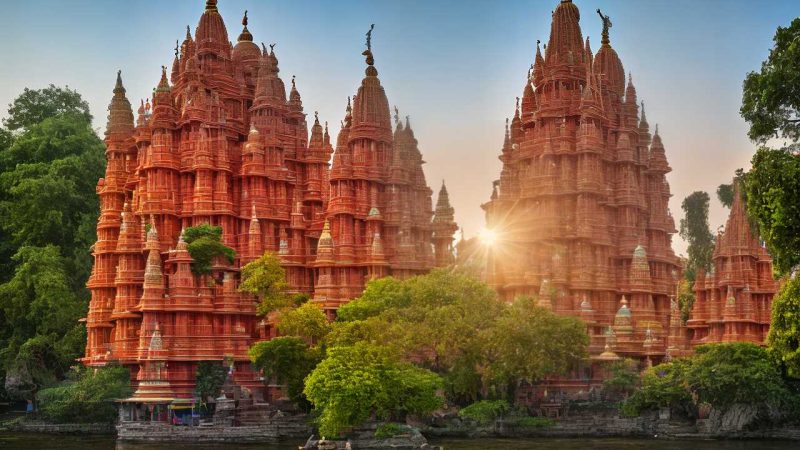The Blossoming of Faith Hindu Festivals in May
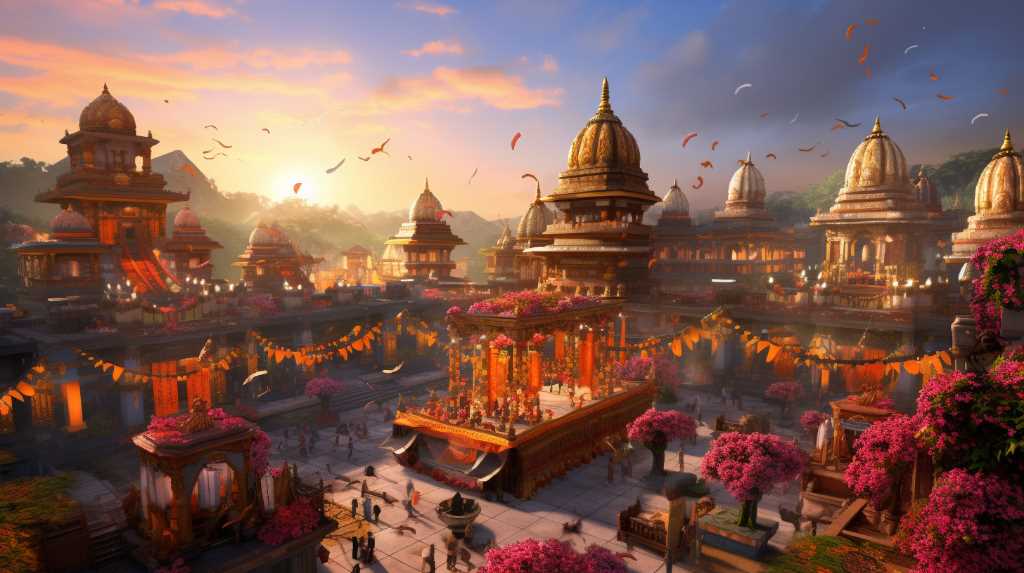
May is a special month for Hindus because it’s filled with important religious festivals. These festivals are not just about traditions; they help people understand Hindu stories and culture that have been around for a very long time.
During May, Hindus celebrate Akshaya Tritiya, which people believe brings lasting wealth to those who take part in its customs. Then there’s Narasimha Jayanti, when Hindus worship Lord Narasimha, and Buddha Purnima, which is a time for deep thought and honoring the birth of Buddha.
Each festival has its own activities and stories. For example, Akshaya Tritiya might involve buying gold as a sign of good luck, while Narasimha Jayanti includes prayers and fasting to remember the victory of good over evil. Buddha Purnima might have people visiting temples and sharing food with others as a way of showing kindness, just like Buddha taught.
The festivals in May also talk about love and marriage. Savitri Brata and Vat Savitri Puja are about a wife’s love for her husband and her determination to keep him safe. These stories show us the power of love and how it’s valued in Hindu culture.
While enjoying these festivals, people can see how they bring everyone together and keep the community strong. They are not only about religion but also about bringing people closer, no matter the time we live in. It’s like a big get-together where everyone shares stories, food, and good wishes, making sure their culture stays alive and continues to give them meaning and guidance.
Akshaya Tritiya: Eternal Prosperity
Akshaya Tritiya is an important festival for many people in India, known for bringing lasting wealth and success. It happens on the third day of the bright half of the month called Vaishakha, according to the Hindu calendar.
The word ‘Akshaya’ means something that never fades away. People believe this day is lucky and that it helps them succeed. It’s a popular time to start new businesses or to invest in things like gold, which people think of as a symbol of never-ending wealth. Giving to those in need is also a common practice on this day because it’s thought that acts of kindness will grow.
Everyone celebrates by visiting temples and doing good things for others, showing how important Akshaya Tritiya is in their culture and beliefs.
To give you a specific example, on Akshaya Tritiya, it’s common to see long lines at jewelry stores as people buy gold rings or necklaces, hoping that this investment will secure their financial future. It’s also a day when many choose to donate food or money to help others, which is a way of sharing their happiness and prosperity.
Narasimha Jayanti: Divine Incarnation
Narasimha Jayanti is a special day that celebrates the fourth form of Lord Vishnu, known as Narasimha. This form was taken by the deity to bring back balance and defeat evil forces. On this day, people who follow the Hindu faith come together to remember that good always wins over bad. They show their devotion by fasting and praying, asking for protection and blessings from Narasimha, who is famous for being powerful yet kind.
The ceremonies on Narasimha Jayanti have a long history and show the power of standing up for what’s right. The festival sends a strong message that being good and just will win in the end. It’s a day that reminds people about the stories from Hinduism and how they still matter today.
On Narasimha Jayanti, people might go to temples, sing religious songs, and share stories about Narasimha’s bravery and kindness. By doing these things, they keep their culture and traditions alive. It’s a time for reflection on the importance of staying true to good values and having faith even when times are tough.
The celebration of Narasimha Jayanti is more than just a tradition; it’s a day that brings hope and encouragement to people.
Buddha Purnima: Enlightenment Celebrations
Buddha Purnima is an important day for many people who follow Hinduism. It’s the day they celebrate the birth, enlightenment, and passing away of Gautama Buddha, who started the religion of Buddhism. This festival happens on the full moon in the Vaisakha month.
During this time, people who believe in Buddhism spend time praying, meditating, and reading their holy texts. They also go to temples, give food or money to people who are poor, and think about Buddha’s life and what he taught. The mood is very respectful and calm because people are showing how grateful they are for Buddha’s spiritual teachings.
Buddha taught about being kind and not hurting others, and these ideas help his followers try to become better people and make the world a better place.
Savitri Brata: Marital Devotion
Savitri Brata is an important Hindu festival where wives honor their commitment to their husbands, much like the legendary Savitri did when she saved her husband from death. It’s mostly celebrated in the eastern parts of India. During the festival, married women fast and pray for their husbands’ health and long life.
The story that inspires this festival comes from the ‘Mahabharata’ and is about Savitri and her husband, Satyavan. On this day, women gather under Banyan trees, which are seen as symbols of strength and endless life, to perform worship rituals known as puja. They also read a story called the Savitri Brata Katha.
This story tells how Savitri fought hard and talked to Yama, the death god, to bring back her husband. Her determination not only saved her husband’s life but also ensured they would have a bright future together. In a way, the festival teaches about the power of love and commitment in marriage.
Women show their care for their partners through their actions and prayers, hoping to share a long and happy life with them. It’s about coming together, supporting one another, and celebrating the bonds that keep families strong.
Vat Savitri Puja: Immortal Love
Vat Savitri Puja is a festival that celebrates the love and commitment between married couples. During this day, women fast to honor the dedication of Savitri to her husband, Satyavan. This tradition comes from a story in the Mahabharata, which is an ancient Indian epic. It shows how strong a wife’s loyalty can be and her spiritual power.
Women celebrate by going to a banyan tree, which stands for the three main Hindu gods: Brahma, Vishnu, and Shiva. They walk around the tree and tie threads to it, hoping for their husbands’ health and long life. They don’t eat and they offer fruits, flowers, and prayers. This is to show deep respect for their marriage and to wish for a lasting relationship with their husbands.
In this festival, the act of tying threads around the banyan tree is a specific example of how women pray for their husbands. It’s not just about asking for good things to happen; it’s about showing that they care deeply for the wellbeing of their partner. This is a day when the love and effort that women put into their marriages is celebrated. It’s a time for heartfelt prayers and the hope that the bond between husband and wife will always remain strong.
Conclusion
In summary, May’s Hindu celebrations are a vibrant display of culture. They include festivals like Akshaya Tritiya, which is about hope and success, Narasimha Jayanti, honoring a powerful deity, and Buddha Purnima, which marks the Buddha’s enlightenment.
There’s also Savitri Brata and Vat Savitri Puja, where married women pray for their husbands’ wellbeing. These festivals matter because they give people time to think, give thanks, and show respect. They’re more than just traditions; they bring people together and keep a rich heritage alive.

